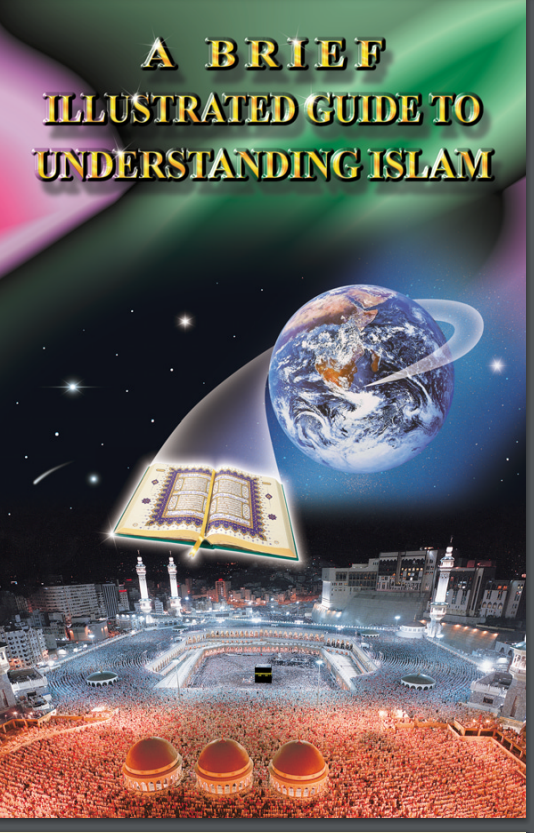FAQ's

Islam is the name of the religion that Muslims follow. People who practice Islam are called Muslims, just like those who practice Christianity are called Christians. The literal and lexical meaning of Islam means submission. Islam comes from the root Arabic letters s-l-m which are the same root letters the word peace (salam) comes from. The term Islam itself does not mean peace, but it implies that one finds peace (salam) through submission (islam). The term Arab is often used interchangeably with Muslim, but this is incorrect. Arab is a race while Islam is a religion. Not all Arabs are Muslim and most Muslims are actually not Arab. Arabs make up about 13% of the Muslim population.
What makes one a Muslim is the acceptance of Islam’s core beliefs found here. This article will not focus on the main beliefs of Islam, but rather the core practices of the faith. Islam is built on five pillars. These pillars do not make up the entire religion, but they are the pillars that hold up the rest of the religion.
- Testimony of faith (shahada):
- Prayer (salah):
- Charity (zakah):
- Fasting (sawm):
- Pilgrimage (hajj):
What is the Qur’ān?
The Qur’ān is the holy book for Muslims. It remains in its original form preserved in the exact language revealed to the Prophet Muhammad peace be upon him. The Qur’ān is not the words of the Prophet Muhammad inspired by God, rather it is the direct words of God.
What does the word “Qur’ān” mean?
The word refers to the holy scripture of Islam, however, linguistically it means “the most recited” or “the most read.” The name is part of its miracle because there is no book in the world that is recited more than the Qur’ān. Millions of Muslims recite the Qur’ān daily and it is also recited during the five daily prayers.
When was the Qur’ān revealed?
The Qur’ān was revealed to the Prophet Muhammad peace be upon him in 610. The Prophet peace be upon him continued to receive revelation over a period of 23 years.
How is the Qur’ān preserved?
The early Muslims wrote the Qur’ān, but they also memorized it by heart. Since its revelation, Muslims have strived to memorize the parts of the Qur’ān or its entirety. Today, millions of Muslims have the entire Qur’ān memorized by heart. Parts of it are also recited in the 5 daily prayers. Therefore, if someone tries to change the Qur’ān, others will quickly catch it because they commit it to memory. A good example would be if someone tried to change the words to a national anthem or change the order of the alphabets. So many people have it memorized that it’s impossible to change without others noticing.
What are the main teachings of the Qur’ān?
The central message of the Qur’ān is the oneness of God. One who reads the Qur’ān will quickly notice that God’s oneness is the most important message contained in the Qur’ān. Other major themes of the Qur’ān include belief in all Prophets and Messengers, belief in the hereafter, and belief in previous scripture.
How many chapters are in the Qur’ān?
The Qur’ān contains 114 chapters, some chapters are long and might have around 300 verses while others are as short as 3 verses.
Are there different versions of the Qur’ān?
No, there is only one version of the Qur’ān. All Muslims, regardless of which sect they belong to, agree that the Qur’ān we have today is the exact version that was revealed to the Prophet Muhammad peace be upon him.
What is hijab?
Hijab is an Arabic word from the root hajaba, meaning to cover, conceal, or hide. It is a complex notion encompassing action and apparel. It includes lowering the gaze with the opposite sex, and applies to men as well, who must lower their gaze and cover from navel to knee. Let’s call it “modest dress and behavior.” The word itself appears in the Qur’an in several contexts, though, interestingly, not in the two verses that address Muslim women’s dress directly [24:31] and [33:59]. These two verses enjoin the believing women to draw their “khimar” over their bosoms and to “draw their outer garments” around them when they are outside, respectively. Traditionally, a “khimar” is defined as a headcover, referred to by those who believe that hijab includes covering the head. Hence the interpretation: “draw your headcover over your neck and bosom.” From this point of view, hijab as modest dress includes covering the head with a scarf.
Modest behavior includes not touching the opposite gender, nor being alone in a room together.
The word hijab is also used as the word to describe the headcover itself, as in “I am wearing a pink hijab to match my skirt today.”
Are Muslim women the only women who wear headscarves?
Many different faith and ethnic groups have head coverings for both men and women. Sikh and Hindu women wear loose veils over their heads. Amish women wear headscarves. Catholic nuns still wear head coverings, and Mary the Mother of Jesus, peace be upon him, is always depicted in a head covering. Orthodox Jewish women are also required to cover their hair. Many avoid the modern conundrum of appearing strange by using a wig instead of cloth to accomplish this.
When do Muslim women start wearing a headscarf?
Once a young woman reaches puberty, the headscarf becomes an obligation. Some young girls like to wear it to practice, or dress up and pretend to be grown up, but it’s not required of them.
Where does a Muslim woman wear hijab?
She will wear it in front of unrelated men, and men in the extended family whom she would be eligible to marry. This includes inside her home and outside it. If none of those men are present, she doesn’t have to wear it, even if she is outside.
What does the word “veil” refer to?
When used to describe Muslim women’s modest dress, the word “veil” is totally inadequate. Region, history, class position and politics all contribute to an incredible variety of modest dress. A face veil, the proper correspondence with the English word “veil”, is known as a “niqab.” The Afghan burqa is a full body covering with mesh grille for seeing; The Iranian chador is a large single piece of cloth cut as a semi-circle covering the head and body leaving the face uncovered; the Iranian manteaux is a long cloak worn with a headscarf; The Indonesian jilbab, often in traditional batik, is a long loose tunic worn over pants or long flowing skirts, with a headscarf; In the West, Muslim women usually adapt mainstream fashion, pairing a long-sleeved shirt with a long skirt and a color coordinated headscarf often held elaborately with jewelery-enhanced pins. YouTube videos and Muslim women’s fashion magazines contain tutorials and suggestions on how to wear different styles of hijab.
Are you considering becoming Muslim but not sure what it entails? The first step is to ensure you understand the basic beliefs of Islam (found here). These beliefs consist of:
- Belief in one God, who has no partner or son
- All Prophets and Messengers
- All scripture revealed by God
- Angels
- Day of judgment
- God’s decree
These beliefs are what make one a Muslim. If you believe in these things you are ready to become a Muslim. To become a Muslim, you simply have to declare the testimony of faith (in Arabic it is called the shahada).
The Shahada is the first pillar of Islam and is what makes one a Muslim. The five pillars of Islam (found here) consist of:
- The testimony of faith
- Five daily prayers
- Giving Charity
- Fasting the month of Ramadan
- Performing pilgrimage to Mecca once in your life
Congratulations, you are now a Muslim. You can contact us and we will send a convert package.

